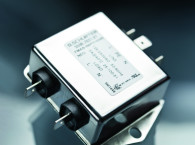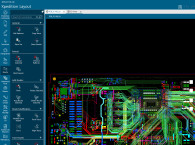
Reducing EMI in the power supply is a growing design challenge, especially as electronic content increases in advanced driver assistance systems (ADAS), automotive infotainment and cluster, building automation, and aerospace and defense designs. A traditional way to ensure that a design meets conducted EMI specifications involves increasing the size of the external passive EMI filter, which in turn increases the overall power supply solution size. By integrating the AEF, the LM25149-Q1 and LM25149 buck controllers enable engineers to meet EMI standards while increasing their design's power density.
The most stringent industry requirements for low-EMI designs are Comité International Spécial des Perturbations Radioélectriques (CISPR) 25 Class 5 automotive EMI specifications. The LM25149-Q1 and LM25149 buck controllers help engineers meet those requirements by mitigating conducted EMI across multiple frequency bands. The integrated AEF helps detect and reduce conducted EMI in the low-frequency band of 150 kHz to 10 MHz, enabling engineers to attenuate EMI by up to 50 dBµV at a switching frequency of 440 kHz, relative to a design with the AEF disabled, or as much as 20 dBµV when compared to a design with a typical passive filter. In both design scenarios, the DRSS technology helps mitigate EMI by an additional 5 dBµV across low- and high-frequency bands.
To further reduce EMI, both buck controllers feature frequency synchronization to an external clock, helping designers mitigate undesired beat frequencies in applications sensitive to EMI.
Maintaining low EMI in the power supply and achieving a small solution size are usually at odds in switching power-supply designs. The LM25149-Q1 and LM25149 buck controllers allow engineers to meet challenging EMI standards and shrink solution size by reducing the area and volume of the passive EMI filter. Compared to competing solutions, engineers can achieve maximum savings of nearly 50% in area and over 75% in volume of the front-end EMI filter at 440 kHz. By lessening the filtering burden on the passive elements, the integrated AEF reduces their size, volume and cost, enabling engineers to achieve the smallest possible low-EMI power design.
The LM25149-Q1 and LM25149 controllers further increase power density by enabling interleaved dual-phase operation and by integrating the bootstrap diode, loop compensation and output-voltage feedback components, which in turn reduces design complexity and cost. Engineers also have an option to use external feedback and loop compensation to further optimize their designs.
Preproduction quantities of the 42-V LM25149-Q1 and LM25149 are available now, only on TI.com, in a 3.5-mm-by-5.5-mm thermally enhanced, 24-pin very thin quad flat no-lead (VQFN) package. The LM25149-Q1EVM-2100 evaluation module is also available. TI expects both devices to be available in volume production in the fourth quarter of 2021. In addition, TI is also working on a pin-to-pin compatible 80-V version of both devices.
www.TI.com







